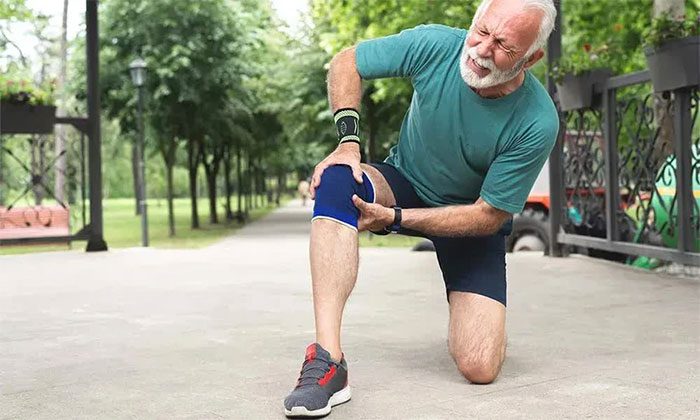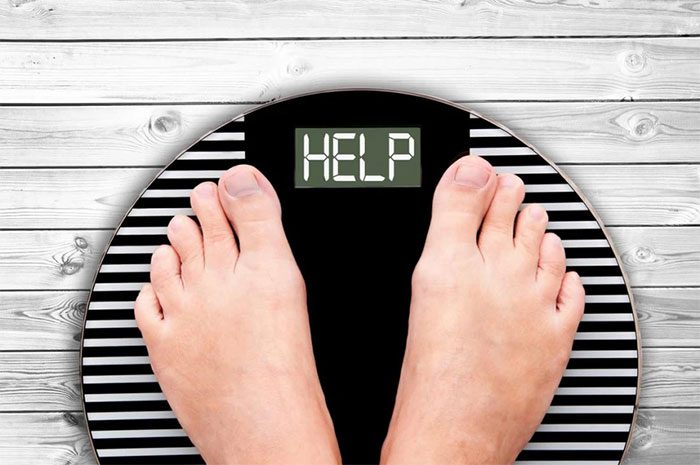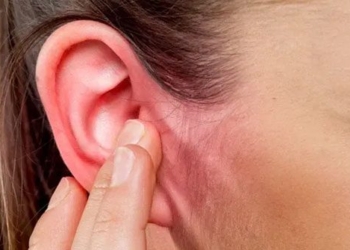Poor circulation can lead to a range of complications, from mild aches and nerve damage in the feet to peripheral artery disease (PAD), heart attacks, and strokes.
The circulatory system is responsible for sending blood, oxygen, and nutrients throughout the body. When blood flow to a specific part of the body is reduced, that part does not receive essential nutrients, and you may experience symptoms of poor circulation.
1. Symptoms of Poor Circulation
The most common symptoms of poor circulation include:
- Aching or weak muscles when walking
- Tingling sensations in the hands and feet
- Pale or bluish skin
- Cold fingers or toes
- Numbness
- Chest pain
- Swelling in the lower limbs
- Bulging veins
- Hair loss on the arms or legs
- Fatigue
Each condition that leads to poor circulation may also cause its own specific symptoms. For example, individuals with peripheral artery disease may experience erectile dysfunction along with typical pain, numbness, and tingling.

Tingling, numbness in the hands and feet are typical signs of poor circulation. (Image: Internet).
2. Causes of Poor Circulation
There are many different causes of poor circulation, including the following common ones:
2.1. Peripheral Artery Disease
Peripheral artery disease (PAD) is a type of peripheral vascular disease. This circulatory condition causes narrowing of the arteries, which can lead to poor circulation in the limbs, particularly in the legs.
In a related condition called atherosclerosis, arteries harden due to plaque buildup in the arteries and blood vessels. Both conditions reduce blood flow to the limbs and can lead to pain.
Reduced blood flow in your limbs can cause symptoms such as tingling and numbness, aching, pain, and swelling in the legs. Over time, this condition can lead to nerve and tissue damage.
If left untreated, reduced blood flow and plaque buildup in the carotid arteries can lead to a stroke. The carotid arteries are the main vessels supplying blood to your brain. If plaque accumulates in the coronary arteries, you are at risk for a heart attack.
Peripheral artery disease is common in adults over 50 but can also affect younger individuals. The risk of developing the disease is four times higher in smokers compared to non-smokers.

Peripheral arteries can lead to poor circulation in the limbs, particularly in the legs. (Image: Internet).
2.2. Blood Clots
Blood clots can partially or completely block blood flow. They can develop almost anywhere in your body, but blood clots in your arms or legs can lead to circulation problems. Blood clots are a serious health risk.
In deep vein thrombosis (DVT), a blood clot develops in the deep veins of the body, often in the legs. If you have DVT and the blood clot in your leg breaks loose, it can travel to other parts of your body, including the heart or lungs. This condition is very dangerous as it can lead to strokes, heart attacks, or pulmonary embolism.
Symptoms of deep vein thrombosis (DVT) include: pain, swelling, redness, or warmth in the affected area.
Individuals who are less active are at a higher risk for deep vein thrombosis (DVT). Therefore, maintaining a healthy lifestyle is key to preventing this dangerous condition.
2.3. Varicose Veins
Varicose veins are enlarged veins, often in the legs. This condition can develop when there is increased pressure on the blood vessels in the lower limbs or due to damaged blood vessels.
If you have varicose veins, you may experience the following symptoms in your legs: a feeling of heaviness, aching, itching, a burning sensation like ants crawling in your calves, and bulging veins along the skin of your thighs, ankles, and knees.
Damaged veins cannot move blood effectively like other veins, and poor circulation can become a problem. Occasionally, blood clots may develop; however, they rarely break loose and cause complications such as deep vein thrombosis.
Factors that increase the risk of varicose veins include: older age, being female, obesity, smoking, having deep vein thrombosis, standing for long periods, or genetics.

Damaged veins cannot move blood effectively and may cause poor circulation. (Image: Internet).
2.4. Diabetes
Prolonged high blood sugar can cause nerve and blood vessel damage, affecting circulation throughout the body, including in the arms, legs, hands, and feet.
Individuals with diabetes should pay attention to the following circulation-related signs:
- Cold or numb feet or hands
- Cracked or dry skin on the feet
- Brittle nails
- Hair loss on the body in the arms or legs
- Bluish nail beds or skin, which may be harder to see on darker skin tones.
- Slow-healing wounds because blood cannot provide nutrients to that area
- Pain or cramping
When these signs are observed, individuals should see a doctor for examination and appropriate treatment.
People with progressed diabetes may have difficulty detecting signs of poor circulation or wounds due to diabetic neuropathy, which can cause reduced sensation in the limbs.
If anyone has a foot wound due to diabetes, they should seek hospital treatment to avoid infection or more severe complications like limb amputation.
Diabetes can also increase the risk of heart and blood vessel problems, including peripheral artery disease. People with diabetes have a higher risk of developing atherosclerosis, high blood pressure, and heart disease.
2.5. Obesity
If you are obese, you may be at higher risk for circulation problems. Obesity increases the risk of:
- Varicose veins due to pressure on the abdomen and lower body
- Fat accumulation in blood vessels, leading to atherosclerosis
- Systemic inflammation
- Various aspects of metabolic syndrome, including heart and kidney disease
- Diabetes, which can lead to nerve and vein damage
These factors and others can contribute to circulation problems.

Obesity increases the risk of poor circulation-related issues. (Image: Internet).
2.6. Raynaud’s Disease
Individuals with chronic cold hands and feet may have a condition called Raynaud’s disease. This condition causes the small arteries in your hands and toes to temporarily narrow, leading to spasms. Symptoms typically last about 20 minutes but can vary. Raynaud’s disease often affects the hands and fingers.
The narrowed arteries reduce the ability to move blood through the body, so you may start to notice symptoms of poor circulation. Symptoms of Raynaud’s disease often occur when you are in a cold environment or feel unusual stress.
3. Ways to Improve Poor Circulation
To improve circulation and prevent symptoms of poor circulation, you should adopt a healthy lifestyle and diet, including:
Regular Exercise
Exercise offers many benefits for those with poor circulation. When your arteries sense physical activity, they increase the release of nitric oxide, which helps relax blood vessels and improve blood flow.
You can walk, swim, cycle, do yoga, etc., but remember to exercise at a moderate intensity; overexertion can be counterproductive.
Build a Healthy Diet
Some foods have been shown to improve blood flow and support heart health, including garlic, onions, beets, berries, citrus fruits, and leafy greens, among others. You should reduce red meat and high-fat dairy products.
Additionally, individuals with poor circulation should cut back on salt intake. A high-salt diet can cause water retention, which then increases blood pressure and swelling.

Prioritize fruits and vegetables and foods containing healthy fats to help improve circulation. (Image: Internet).
Quit Smoking
The substances in tobacco can cause blood vessel constriction, limiting blood flow, and are linked to inflammation and long-term damage to arterial walls. Therefore, quitting smoking not only helps improve poor circulation but also prevents many diseases.
Wear Compression Socks for Diabetic Individuals
Compression stockings designed for diabetics are softer and more flexible, aimed at preventing skin damage, especially for those with nerve conditions. Compression stockings contain elastic components that gently squeeze your legs to help prevent swelling and venous congestion.
Medication
Whether natural remedies are effective or not, it is essential to consult your doctor regarding medications that support circulation. Your doctor may prescribe medications designed to alleviate any restrictions in blood flow, including:
- Statins to prevent plaque buildup in the arteries.
- Antiplatelet medications (such as aspirin or clopidogrel) or blood thinners (like warfarin, apixaban, or rivaroxaban).
- Vasodilators known as cilostazol, which can help reduce pain while walking for those with peripheral artery disease.
- Antihypertensive medications.
- Medications to control blood sugar levels if you have diabetes or prediabetes.
In some cases, your doctor may also recommend surgery to clear blocked arteries, remove blood clots, or treat varicose veins.
Overall, poor circulation is a warning sign of many potentially serious health conditions. Therefore, you should maintain a healthy weight, establish a balanced lifestyle and diet, and have regular health check-ups to prevent this condition.





















































